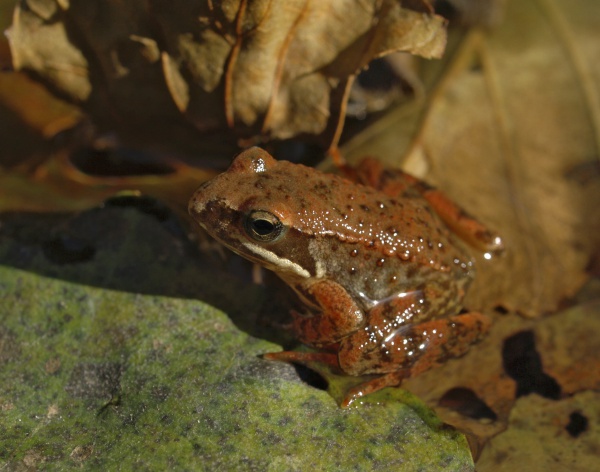Facts About Iberian frog
The Iberian frog, also known as the Iberian stream frog, is a charming amphibian native to Portugal and Spain. Belonging to the Ranidae family, these frogs thrive in rivers, mountain streams, and swamps. However, they face multiple threats, including habitat loss, invasive species, climate change, water pollution, and increased ultraviolet radiation.
These frogs can grow up to about 7 cm in length, with females typically being larger than males. They possess several distinctive features, such as a tympanum (external eardrum) located behind their eyes, a dorsolateral fold running from their head to their groin, and smooth skin with fine granulations. Their coloration can range from olive to reddish or greyish-brown. At night, you might hear their call, which sounds like "rao-rao-rao" at a rate of about three calls per second.
The Iberian frog is indigenous to Portugal and northwestern and central Spain. It prefers slow-moving streams, rivers, ponds, and glacial lakes in mountainous areas, living at altitudes up to 2,425 meters. It shares its habitat with other frogs like the agile frog, Perez's frog, and the common frog.
These frogs are agile jumpers and are active both day and night, feeding on various insects. Breeding occurs from November to March in lowland areas and from March to May in higher altitudes. They lay their eggs on water weeds or beneath stones. Tadpoles hatch from these eggs and metamorphose into juvenile frogs in about three months.
Unfortunately, the Iberian frog is facing significant challenges. Habitat loss due to agriculture and deforestation, disturbances from tourism, invasive fish species, and the presence of the American mink have all contributed to the decline of some populations. As a result, the IUCN Red List of Threatened Species has classified the Iberian frog as near threatened. While certain national parks have implemented protection measures, more conservation efforts are necessary to ensure the survival of this species in other regions.

 Portugal
Portugal